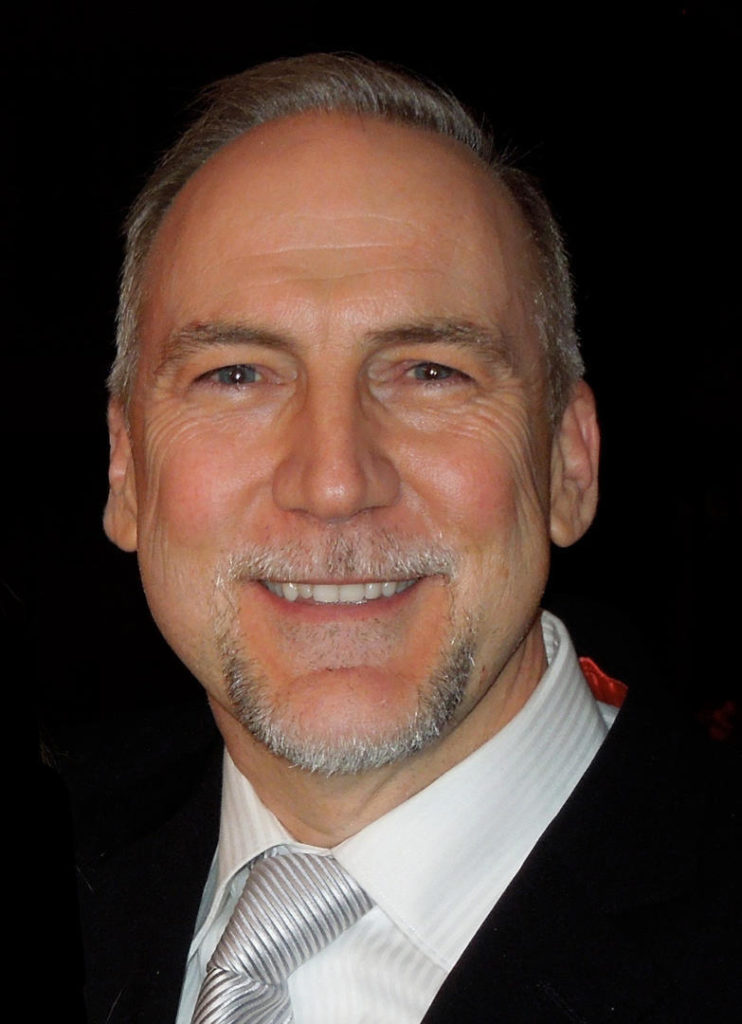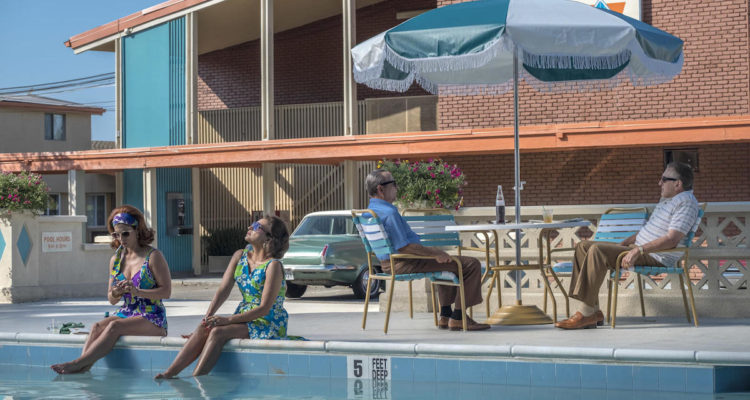“I lived on that Compliment For Five Years.” Oscar Nominated Production Designer Bob Shaw on His Ongoing Partnership with Martin Scorsese, the Pressures of Shooting Three Locations a Day, and How Standing Up to Producers Scored Big with Scorsese
When two-time Emmy Award winning Production Designer Bob Shaw opened his family photo albums, he immediately knew that he’d struck a different kind of gold. His family photos of Pennsylvania and South Jersey would be the perfect inspiration for his work on director Martin Scorsese’s epic $100 million plus mob epic.
The story, spanning several decades from the 1960s to early 2000s, follows “House Painter” Frank Sheeran and his work with mob boss Russell Bufalino [Joe Pesci] and Teamster President Jimmy Hoffa [Al Pacino]. Shaw’s goal with The Irishman’s production design was to capture the era in a very truthful and personal way, drawing more from documentary and news footage than any films of the era.
Shaw’s impressive work helped earn The Irishman 10 Academy Award Nominations, including Best Production Design. Awards Focus spoke with Shaw ahead of the Oscars, covering the pressures, pacing, and inspiration behind his work on Netflix’s The Irishman.
Awards Focus: For the regular American watching the Oscars at home, what would like them to know about your craft?
Shaw: I’d like people to know that part of what we aim for as filmmakers is for audiences to not be aware that we are doing our job. For production designers, we’re either providing the environment or substantially enhancing the environment without drawing attention to it.

AF: The Irishman has 295 locations and 28 sets, with such an undertaking I’m assuming the scope of the film — spanning decades — required you to do things a bit differently than on most drama films. Can you discuss those changes?
Shaw: I don’t know if it was really that different a process, but there was a lot more of it. You had to sort of focus and take careful aim. I kept likening it to skeet shooting. You couldn’t lose your concentration or you wouldn’t hit one of the pigeons. You had to stay focused for a longer period of time and it was like everyday the shooting crew yelled pull and we tried to hit the target. It was doing three movies rolled into one. If you divided The Irishman into thirds it would still be a fairly ambitious location or set count for your average movie.
AF: It’s often discussed that The Irishman is well over a 100 million dollar drama. With that kind of budget, did you find that you job was any easier?
Shaw: We certainly weren’t really spoiled for choice. However, when people hear we had 108 shooting days there’s a sense that it was somehow luxurious. We were doing two or three locations per day. In the case that we needed to have 5 gas stations for the film, then we’d needed to have upwards of 10 location choices for us to have the flexibility to put that into the schedule.
AF: How important is the communication between you and the Director of Photography?
Shaw: It’s really very important, this is my fourth project with Rodrigo Prieto. I think there is more of a need for a real cooperation and a lot of dialogue with the DP then there ever has been. My role has sort of changed… in the case of The Irishman, we talked about this with Marty and the earliest scenes were in Kodachrome which is a certain kind of photography which has a certain look.
Kodachrome does something particular with reds and tomato reds and aquas. If you look at early 60s photography you realize that certain colors pop out. As we got later into the film, there is more of an extachrome look and so you have to be aware of what colors feature well in that style of photography.
AF: What were some of your inspirations to help choose a color palate with the DP. Were there certain films you referenced?
Shaw: Interestingly sually on a Scorsese project you have a lot of film references. That wasn’t the case on this one because it was so reality based. I watched more news footage and documentary footage than narrative film.
AF: Were there any frustrations trying to locate a specific piece from so many different eras?
Shaw: Often you have to read a script over and over before it starts to come into focus. When I read this script it was very clear in my mind right away. Certainly the first part of the script as my whole family was from Philly.
As I went back to the family photo albums, I remembered that numbers on the houses in Philadelphia were painted on the brick and were always on the diagonal… usually in black and gold lettering. When I mentioned this anecdote to Marty he said, “Oh, we have to do that”. He loves those little details, like the dining chairs that were covered with multiple layers of Naugahyde and the floral patterns with the silver sparkles. I had a lot of little touches that were jostled out of my memory that hopefully helped create an environment that would make the actors feel like they were somewhere real.
AF: On the last shot of The Irishman, what’s the emotion like potentially witnessing the last film these icons will ever make together?
Shaw: I was thinking how amazing and how fortunate we were to have been able to do the project and I told everyone in my department to savor this moment because the chances are of us being able to do anything like this ever again are very slim.
When I did the pilot for Vinyl with Marty, I had in mind this kind of recessed ceiling for the lobby of the record company and the producers were not on board with that. They asked, “Can’t you just put a regular ceiling in there?” I fought for that and when we shot it, Marty looked at the monitor and said, “I love that ceiling.”
Then, as Marty saw I was looking at the producers, Marty said in a louder voice, “Bob I love the ceiling!” It was one of the biggest compliments I remember getting, I lived on that for 5 years. It was one of the rare instances that I dug in my heels and said that it really has to be something special and it can’t just be forgettable.
AF: What do you hope that audiences take away from watching The Irishman?
Shaw: It’s an epic story about people who live very ordinary lives. I think letting a story unfold at the pace that it needs to and being invested in what you watch is important. Let yourself go along for the ride… don’t question it while you’re on it, just enjoy it.

The Irishman: Latin Casino Interior (Before) 
The Irishman: Latin Casino Interior (After) 
The Irishman: HoJo Pool (Before) 
The Irishman: HoJo Pool (After) 
The Irishman: Umberto’s Exterior (Before) 
The Irishman: Umberto’s Exterior (After)




